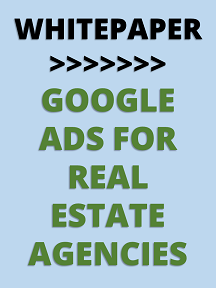Targeting Property Buyers
Property buyers are targeted based on user behavior that indicates they are in the market to purchase a home or other property. This usually involves searches like “homes for sale in Boston,” “single family homes 20145” and “affordable condos in Georgetown.” They can also be targeted based on the content they are currently viewing or have previously viewed. This can include viewing homes on real estate listing sites or viewing articles like “Whitehaven development: 23 luxury homes planned in new subdivision” or “Best Houston Neighborhoods To Buy Investment Properties.”
Since buyers usually just want to see properties that are relevant to their query, buyer ads should lead to the most relevant property search pages. If the user searched for “3BR homes in 21045,” they should be sent to a landing page that includes preset filters for 3 bedrooms and the zip code 21045. These search results landing pages should be frequently and/or automatically updated with new listings. It’s usually best to allow the user to browse the search results pages, but require registration to view a detail page for a single property. You can also experiment with allowing prospects to view 1 or 2 full property pages before requiring registration to view more properties. If your ad and landing page do not provide the information on the properties that the prospect is looking for, your conversion rates will suffer.
Targeting the bottom of the buying funnel
People who are just browsing or window shopping are more likely to enter vague and unfocused searches like “homes for sale in Michigan” or “condos for sale.” The same is true for people who know they may move in the future but are not actually in the buying process. We describe these people and searches as “top of funnel” or “middle of funnel.” By contrast, prospects at the bottom of the funnel are actually looking for a home in the near future and in the process of buying. These prospects tend to be more specific with their searches which may include cities, zip codes, neighborhoods, streets, school districts, condo buildings, etc. These more focused searches also include specific property types and amenities (“4 bedrooms,” “new condos,” etc.) Here are more examples of buyer searches grouped by their location in the funnel….
For local agencies, its best to spend most of the budget on the more specific, bottom of the funnel searches. Large national agencies and major databases have large advertising budgets, and they are targeting the entire US. This means that they tend to focus on broader and higher volume keywords. These larger/national advertisers would need to manage a massive number of long-tail keywords to target the bottom of the funnel. Most of the buyer search volume is in top and mid-funnel searches so this is the area that large national advertisers are most focused on. It's difficult for large national firms to compete at the bottom of the funnel because the volume is lower and they would need to be much more granular with their local keywords in terms of neighborhoods, zip codes, condo buildings, streets, etc. This means a local agency can avoid competition and drive better quality traffic to their website with a lower cost-per-click (CPC) by focusing on more specific, lower funnel searches.
Location Targeting for Buyer Ads
Since buyers can come from outside of the agency’s region, targeting for buyer ads can be more liberal depending on the search term. For example, if a Chicago-based agency is targeting the search term “luxury condos in Chicago,” the targeting can cover multiple states and even the whole country. However, if this same agency is targeting “luxury condos near me” or “luxury condos with 2 bedrooms,” they need to limit the location targeting to areas in and around Chicago. If targeting a large geographic area, it may make sense to increase bids as you get closer to the targeted location.
Display and video ads also require local targeting since the user has not specified that they are interested in a specific location.
While Google does not allow zip code targeting for real estate ads, you can still target by state, region, county, city, neighborhood, and radius. Google also does not allow targeting of real estate ads based on gender, age, parental status, or marital status. You can find more details on Google’s help/policy pages.
Update to Personalized advertising policies: Housing, employment, and credit (October 2020)
Display and video ads also require local targeting since the user has not specified that they are interested in a specific location.
Roughly half of the buyers interested in a specific location will be from the same state. Roughly 80% will be from the same state and nearby states. So if you decide to advertise nationally you should make sure that searches from far-off states do not make up much more than 20% of the total volume.
Other Best Practices for Buyer Campaigns
- Most or all of the budget should be for desktop/tablet and not on mobile phones. The real estate shopping experience is much better on larger screens and searchers on desktop/tablet are more likely to be seriously considering a purchase.
- Since the ads are mostly pay-per-click, it’s good to include pricing in your ad copy or ad extensions to prevent unqualified users from clicking on your ads.
- Each combination of a location and property type should have its own Adgroup (Bethesda MD Condos, etc). Tightly focused Adgroups are needed to make sure there is close alignment between keywords, ad copy, and landing page. This leads to better conversion rates, and better click-thru rates which are rewarded with a lower cost-per-click.
- For landing pages and sites displaying properties, the most important factors include quality property images, virtual tours, and other media, and a simple easy-to-use searching interface. A complete discussion of real estate websites is outside the scope of this whitepaper.
